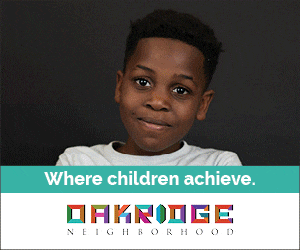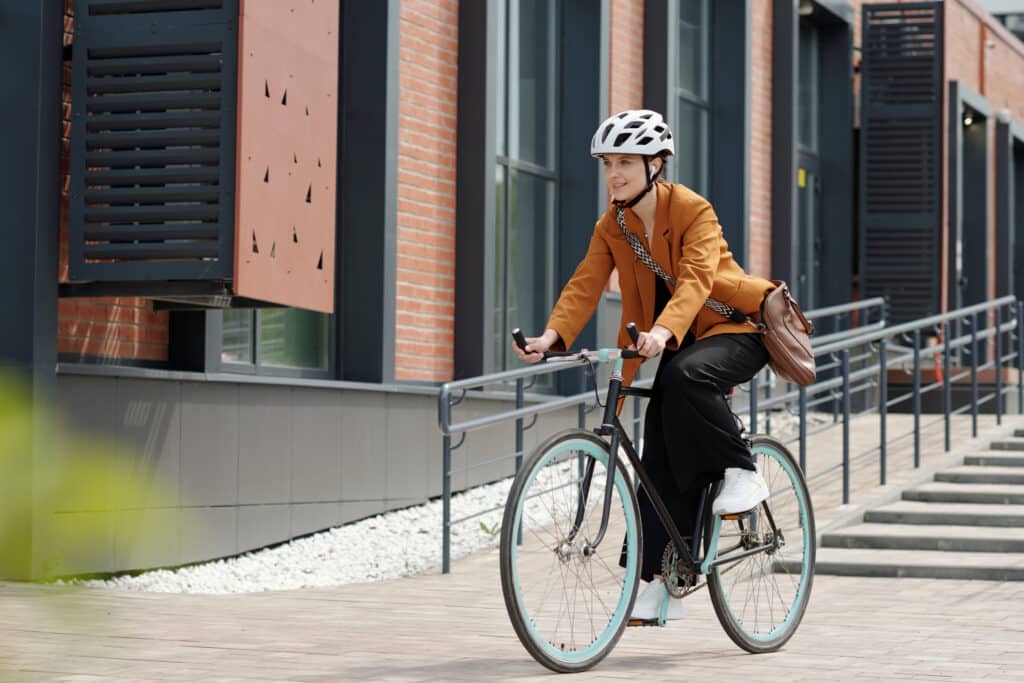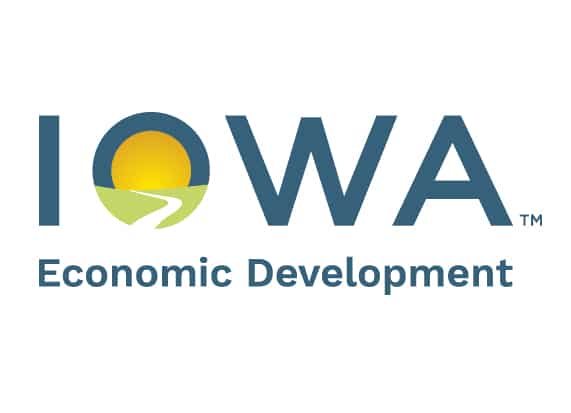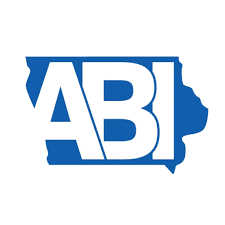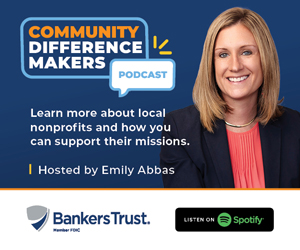Tracing the innovation journey
6 takeaways from conversations with entrepreneurs, innovators at the innovationIOWA event

Business Record Staff Jul 29, 2025 | 11:04 am
7 min read time
1,656 wordsAll Latest News, Innovation and EntrepreneurshipBy Sarah Diehn and Lisa Rossi
In the 2025 innovationIOWA Magazine, we posed a question to several successful Iowa innovators: How did you get there?
We asked them to take us back to when innovation was still new to them. In a series of essays these innovators have shared with us where they got started.
At our annual innovationIOWA event on July 10, we talked with some of the innovators featured in the magazine and others from the community to further explore their journeys. They discussed how they overcame challenges and found victories along the way and shared what drives them to do this work.
Speakers included:
Billie Asmus, founder and CEO, Repaint Studios
Katherine Cota, director of Lamberti Center for Rural Entrepreneurship, Buena Vista University
Igor Dobrosavljević, founder, Grand Consulting
Cody Fuller, founder and CEO Fuller Radiance LLC; Buena Vista University student
Rocio Hermosillo, co-founder and CEO, Team ELLLA
Erika Macias, president and publisher, Hola America Media Group and JEFAS Latinas in Business Magazine
Jose Venales, director of credit and lending, Iowa Center for Economic Success
Here are our takeaways from the conversations.
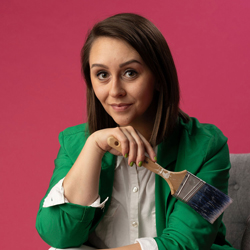
‘No choice but to succeed’
Billie Asmus invented a reusable paint tray after she and her husband bought a fixer upper that needed a lot of work. She found she was constantly going through paint liners and didn’t have an effective way to save the paint. When she researched a better option, she couldn’t find one, so she made it herself. Her products are now in Lowe’s, Home Depot and she recently signed a deal with Ace Hardware.
On her entrepreneurial journey, there have been many ups and downs, from the moment in the early stages of her company she weighed whether to put her child in day care, to the time her company encountered a financial crisis, she said.
“It not only drained me mentally and spiritually, but I mean financially, it drained me,” she said. “And I remember just getting to the end of all that, like, am I going to keep going and keep doing this? Like, is this seriously going to be worth it at this point? And I already had employees that I was committed to, so it was that mentality of I have no choice but to succeed. Even though this feels like the rock bottom, I have to keep going. And I’m glad I did.”
—Lisa Rossi
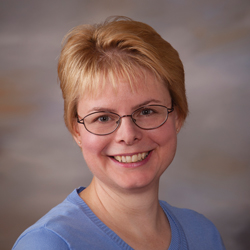
Develop a plan for the hard work
Katherine Cota is the director of the Lamberti Center for Rural Entrepreneurship at Buena Vista University and a professor in the Harold Walter Siebens School of Business at BVU. The center recently received a $2 million anonymous gift to renovate Grand Hall on BVU’s campus, so the entrepreneurship center will soon take up the entire first floor of the hall. The center will expand its incubator and put in classrooms that allow for statewide teaching.
Cota, who coaches entrepreneurs and innovators, said it’s important for people not just to have a good idea, but to execute.
“The hard work is what sets [you] apart,” Cota said. “I’m happy to talk with folks about ideas, but we need to develop a plan for doing the hard work. And there are many folks who realize the hard work isn’t for them, and so choose not to become an entrepreneur.”
—Lisa Rossi
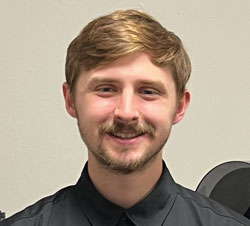
Seeking a change in mindset
Cody Fuller is a student from Buena Vista University who founded his own 3D printing company, Fuller Radiance LLC, which has won multiple pitch competitions since starting his company.
Fuller said he recently had the realization he wanted to grow beyond 3D printing.
“I want to encourage other entrepreneurs to grow their businesses as well,” he said. “My tagline for Fuller Radiance is, ‘Where bright ideas shine.’ My main product line is a lamp. But that doesn’t mean the shine has to stay on the lamp.
“One thing I’m very curious about is the ability to change mindset,” he added. “Where do I want to grow? And so that change in mindset isn’t just immediate, it takes time as well. And so lately, I’m trying to think, ‘Well, how can I find time just for focusing hours?’ … it helps you grow as an entrepreneur.”
—Lisa Rossi
Addressing the need to uplift Latina entrepreneurs
Tar and Erika Macias launched the JEFAS Latinas in Business Magazine in 2024 because they believed in the need for a product focused on telling stories of Latina entrepreneurs in Iowa.
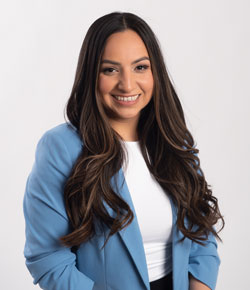
It quickly became an avenue for entrepreneurs like Rocio Hermosillo to feel seen. As word spread, Hermosillo and several others worked with the Maciases on the first Latina Business Excellence event, which confirmed the need with more than 250 women registering.
In addition to telling individual entrepreneurs’ stories, Hermosillo said the publication and event have helped support a more connected community.
“I’ve even been able to learn through the magazine,” she said. “I think sometimes it’s portrayed as the things Latinas are doing or aren’t doing, so this magazine shows a different story. Over 250 women [came to the event], but sometimes I don’t think we know that, or we’re not able to connect. Through [the JEFAS] stories, I’ve been able to connect with various women to grow my business, too, so I think those are some of the wins that you don’t see up front but come through later.
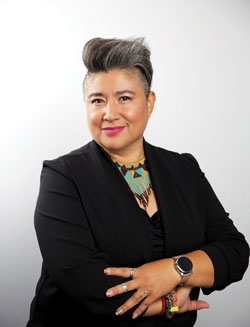
Erika Macias said the magazine was different than the newspaper model Hola America had used before.
“You have to choose the stories, the women, the businesses, but it’s been really about the people. How difficult it is to bring all of them together and to have them feel comfortable when they come to you to tell the stories.”
The effects of storytelling on the entrepreneurial ecosystem are not always tangible, but Hermosillo said there are opportunities for impact on the community and economy.
“Only 3% [of Latina-owned businesses] actually have scaled at-large, and I think that’s because there’s a gap. There’s a gap in either mentorship or accessibility or something like that,” she said. “What I think is really cool is to showcase these stories of all these women who are out there making moves, scaling and doing big things, and to show a different narrative and the opportunities of when you do invest in a Latina-owned business, you’re going to duplicate your wealth three times because it doesn’t only go to their families, it goes to the communities, and it ends up bringing more economic opportunities overall.”
—Sarah Diehn
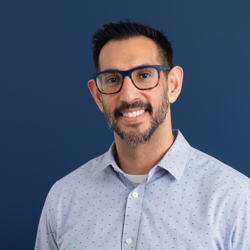
‘Funding is not the silver bullet’
Jose Venales and the Iowa Center for Economic Success have helped dozens of entrepreneurs access capital through its Community Financial Development Institution loan fund, which can loan up to $100,000 to small business owners.
Venales said while funding is an important piece of the puzzle when building a business, the Iowa Center steers entrepreneurs toward a holistic approach that provides the foundation so that when they do get funding, it goes further.
“We created the CDFI to help entrepreneurs and small businesses to access capital. The way that we do it is not only offering the capital, but also helping with the technical assistance that is so much needed because just having funding is not the silver bullet. You have to have the education to know what to do with that money to be successful,” Venales said.
He said part of this approach is also to be a partner with the entrepreneur throughout their journey, not just at the beginning. Three pillars at the Iowa Center are education, capital and connections, he added.
“We don’t want to tell them how to sell their products or provide their services because they know how to do it. … We want to help our clients to have the education and knowledge to make really good financial decisions,” he said.
—Sarah Diehn
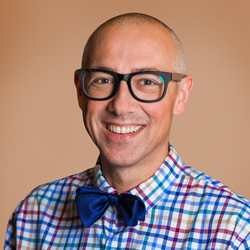
Discovering dreams in America
When Igor Dobrosavljević arrived in Iowa as a refugee following the civil war between Bosnia and Croatia, he knew the story America tells about itself well. But after decades living and working in Des Moines, including starting his own business, he said he reflects on the systems that allowed him to succeed.
“First of all, was the people of Iowa welcoming my family and being able to move here and attend school,” he said. “It was something as simple as food stamps … it made it possible for us to stay here and live and grow. Programs, and people like Tej [Dhawan], who just listened, offered advice to some kid that didn’t know anything at the time. It was also big things at the time like Twitter. It was small enough. It was in this weird space of providing some glue to the entrepreneurial ecosystem here in Des Moines, specifically. It was very easy to meet like-minded people and grow together. It was a lot of disparate systems that had nothing to do with me that allowed me to have the success and live the dream that I was hoping to be able to live when we moved here.”
Before moving to Iowa, Dobrosavljević and his family lived in Germany. The high schools there had career pathways that led to apprenticeships, and that helped inspire the IT apprenticeship program at Grand Consulting, the first in Iowa.
He said it also came out of the realization that first there wasn’t a four-year degree that translated to the skills he needed in new hires, and ultimately a degree wasn’t required for this line of work. What did matter was a willingness to learn and work with others, he said.
“We’re hoping to expand that program not only internally as we grow, but we are hoping to serve as an example of an alternative way to hire, and educate, and train people. And I feel like it opens up paths to careers that otherwise might not be open to people that either don’t care to go to college or can’t afford to go to college.”
—Sarah Diehn

